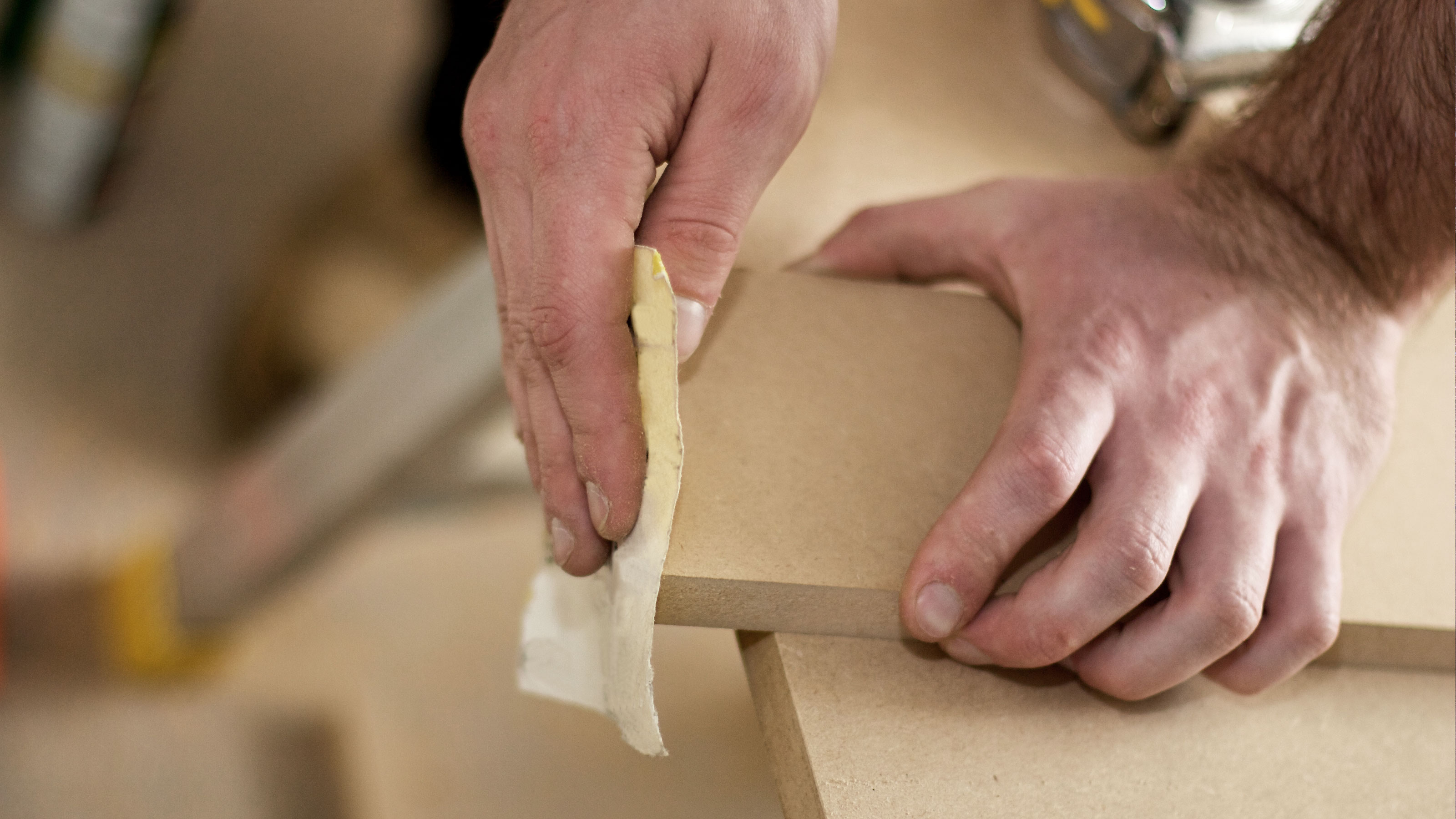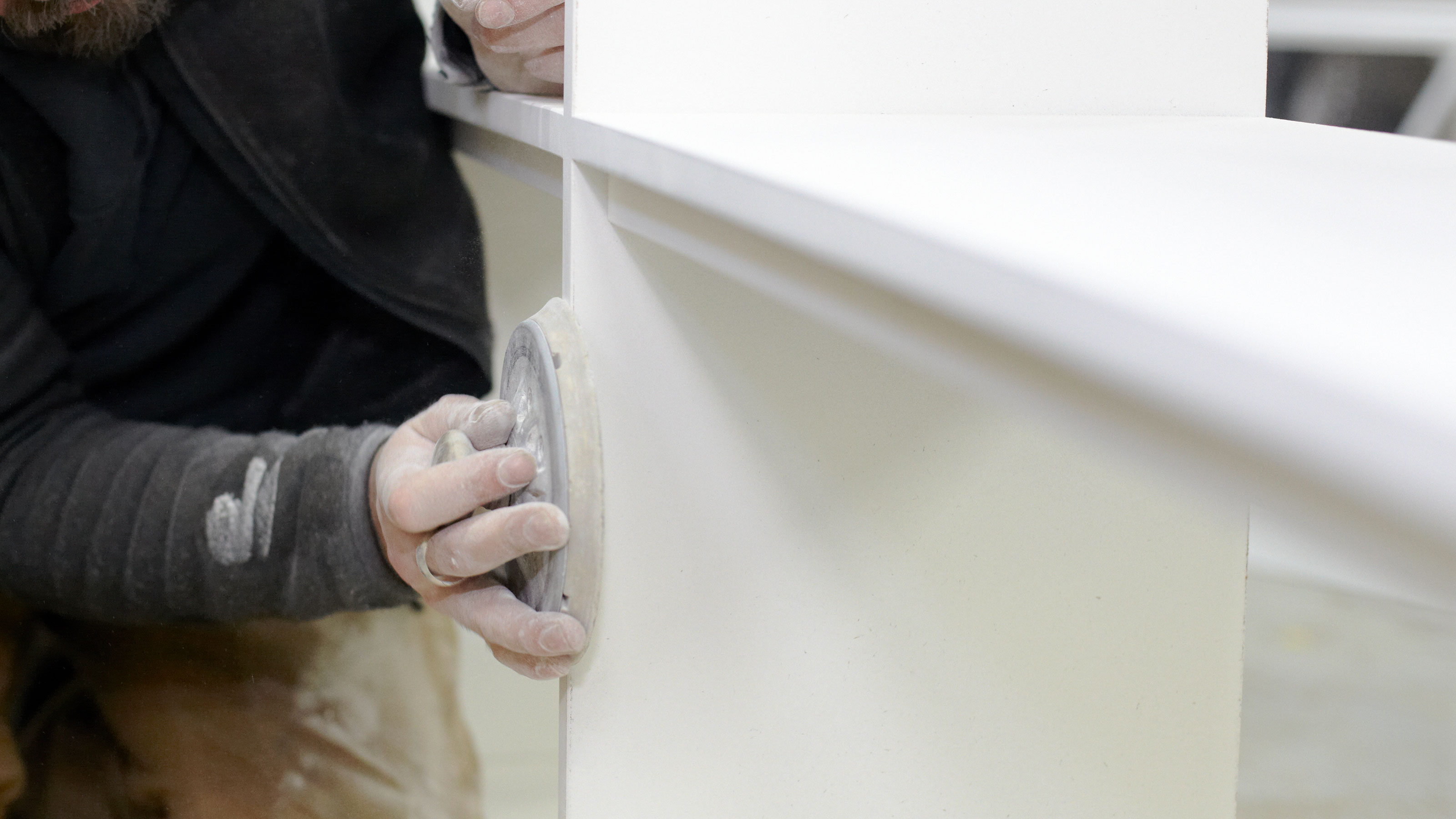Sanding MDF: What you need to know to get a smooth finish
Sanding MDF is similar to sanding wood, but there are some subtle techniques that will help ensure that you get the best surface. Here's what you need to know

Sanding MDF might seem unnecessary as it’s a manufactured board that already has a smooth surface to work with. But the manufacturing process can leave imperfections that need to be dealt with and then there’s the edges to think about as well.
Admittedly, if you are using high density MDF compared with standard MDF, there is less sanding involved. However, MDF typically needs to be sealed or painted which will raise up the fibres of the board leaving a less than smooth surface.
Here we look at what sandpaper, tools and methods you need to use for a fine blemish-free finish.
Sanding MDF: What kind of sandpaper should I use?
As a manufactured board, MDF is relatively smooth when you get it, so you typically don’t need an aggressive sandpaper grit like 40, 60 or 80. In most cases a 120-grit sandpaper is your starting point, but you can look at 180-240 grit if the surface is in good condition.
This applies after you have sealed or painted the MDF as well. To get a super smooth finish try a fine sandpaper like 320-440 grit.
How do I sand MDF edges?
The edges of MDF are where the fibres of the board are more exposed and typically need more work than the flat upper surface.
You can sand as normal with a fine sandpaper grade such as 120-180 grit to help smooth out. However, when a sealer or paint is applied the fibres will rise and need sanding again.
Start with a 120 grit, then graduate to 180 or 220 grit for each added coat. Use a sanding block to help keep the edges flat.
Should I use a power sander or sand by hand?
MDF is different to natural wood and is not as resilient and needs to be dealt with slightly differently. You can use the best orbital sanders, a sheet sander or detail sander on MDF. A belt sander is generally too aggressive and will leave you with an uneven surface.
Like sanding wood by sand, sanding MDF by hand is a good choice as it gives you more finesse and control over the process. However, ensure you use a hand sander like this Stanley Hand Sander from Amazon – or a sanding block – to help ensure that the surface and edges stay as flat as possible.
One tip when sanding a flat surface is to lightly apply pencil marks across the surface of the MDF and once they disappear move onto the next section to sand.
Can MDF be sanded and painted?
Yes, MDF can be painted. Painting MDF is a popular option for the manufactured board as it is cheap, versatile and reasonably consistent across its surfaces.
That said, when a liquid – such as paint – is applied to MDF the compressed fibres of the board will raise up and leave a less than smooth surface. So you will need to sand the surface of the board between each coat to get a smooth finish.

Why can sanding MDF be hazardous?
MDF is a manufactured board that typically contains softwood, hardwood and some type of resin to help bind the wood fibres together. When sanding MDF a lot of dust can be created releasing not only the wood fibres but the resin holding the board together.
Don’t panic, the levels of chemicals in MDF are regulated, but it is still recommended to wear a face mask. And if using a power sander make sure to use its dust bag or attach to a vacuum to keep dust to a minimum. Check out the Health and Safety Executive site for more information on MDF.
Get the Homebuilding & Renovating Newsletter
Bring your dream home to life with expert advice, how to guides and design inspiration. Sign up for our newsletter and get two free tickets to a Homebuilding & Renovating Show near you.
Steve Jenkins is a freelance content creator with over two decades of experience working in digital and print and was previously the DIY content editor for Homebuilding & Renovating.
He is a keen DIYer with over 20 years of experience in transforming and renovating the many homes he has lived in. He specialises in painting and decorating, but has a wide range of skills gleaned from working in the building trade for around 10 years and spending time at night school learning how to plaster and plumb.
He has fitted kitchens, tiled bathrooms and kitchens, laid many floors, built partition walls, plastered walls, plumbed in bathrooms, worked on loft conversions and much more. And when he's not sure how to tackle a DIY project he has a wide network of friends – including plumbers, gas engineers, tilers, carpenters, painters and decorators, electricians and builders – in the trade to call upon.

